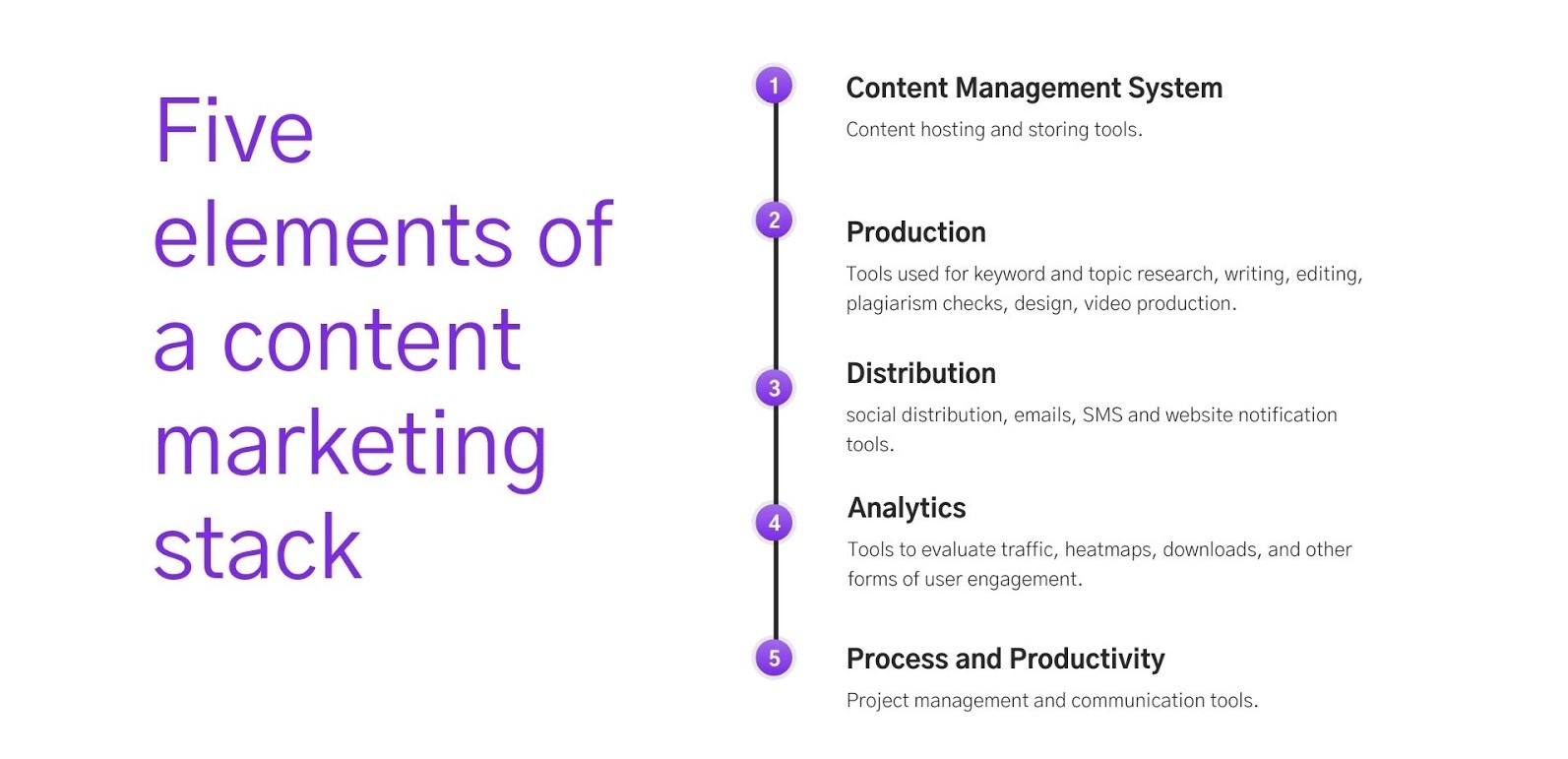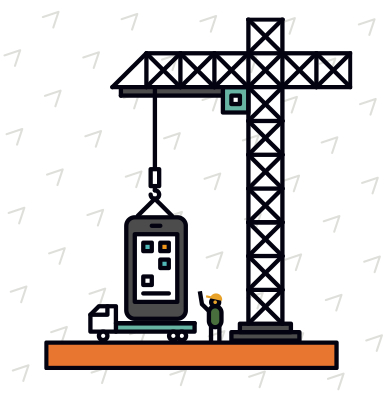If you’re a leader or part of a content team, you might have spent a significant amount of this year pivoting to meet the moment. You probably also needed to move faster with shorter content production cycles than ever before. In essense, content creation and distribution radically transformed during 2020 and is expected to continue into 2021. That’s why now’s a good time to consider building a content marketing technology stack.
What is a content marketing stack?
Like a martech stack, a content marketing stack is a set of tools and resources you can use at different stages in the content marketing cycle. A primary content marketing stack will generally have these five clusters:
- CMS: A CMS or a content management system is at the center of the stack and can be the large container that holds all of your content in one place. Whether it’s blogs, landing pages, or resources, everything can be housed here.
- Production: Group all the tools you’re currently using for keyword and topic research, writing, editing, plagiarism checks, design, and video production into this cluster.
- Distribution: These are tools you can use for social media, emails, SMS and website notifications, and other delivery methods.
- Analytics: Includes tools to evaluate traffic, heatmaps, downloads, and other engagement.
- Process: Project management and communication tools that enable better collaboration among teams such as writers, editors, designers can be included here.

◼ Here’s a ready-to-use template to build your basic content marketing stack.
Why invest in a content marketing stack
- Remote and distributed teams: Many companies have content marketing spread across different teams within marketing. For example, content production and distribution might be two separate teams, content teams spread across other regions, and in the current pandemic, your teams might be working remotely from various locations. A unified content stack eliminates siloes within these teams.
- Restricted budgets, growing requirements: If 2020 was about “Do more with less,” 2021 might bring in further budget cuts. Content teams will be expected to increase the reach, boost engagement, and also generate business results. A centralized content tech stack helps your teams repurpose content more efficiently. Ultimately, teams can manage the growing demand for good content while optimizing spend.
- Growth of new channels and touchpoints: Audiences have transformed significantly in the way they choose to consume content this year, notably on mobile devices. You might also notice that webinar fatigue has set in, with your audience having many options. As remote work, travel restrictions, and lockdowns continue, we expect a further shift in typical channels and touchpoints. A content stack helps your team stay agile and shift gears swiftly, so you’re in step with your audience all the time.
Steps to build a content marketing stack

- Build the basic stack you’re currently using: Start by listing all the tools you’re using now and group them into the clusters noted. Use this template to build this list. Once you complete this step, you’ll have a preliminary stack in place.
- Optimize the stack: Spend time to identify which of these tools are not useful. Are they not needed in your content process? Are they not helpful and practical enough? This step will help you identify tools you can replace or eliminate from the stack.
- Identify new tools that can help with your goals: What are your content goals for 2021? Are these tools aligned with those objectives? You might also be considering improvements to your content marketing process. For example, if your company has hosted many webinars during the last few months, you can repurpose that content into blog posts; tools such as Descript can help with the transcriptions. This saves time, simplifies the rewriting process, and allows your team to spend time on more strategic projects.
- Review and measure performance: Once you’ve built the content stack, you’ll want to make sure it’s helping to drive your content goals. Measure the performance against goals, seek feedback, and program result from your team to track significant improvements. Also, keep an eye out for newer or other technology that can improve quality, save time, or simplify your content marketing.
◼ Recommended content marketing stack tools for 2021:
- Content Management: WordPress, HubspotResearch, and Ideation: Ahref, Google Keyword Planner
- Writing, Editing and Plagiarism check: Grammarly, Quetext
- Graphics and Video production: Canva, Lumen5, Adobe Premiere, Infogram
- Distribution: Buffer, Hubspot (email), Unbounce, Drift, Zoom
- Analytics: Google Analytics, Hotjar
- Process: Slack, Trello
As we move towards 2021, it’s more critical than ever to have a solid plan to address content marketing challenges we faced this year. A robust content marketing stack can help you drive significant improvements in the way your teams produce and deliver content to your audience. The sooner you begin to integrate a content marketing technology stack into your content plan, the better prepared you’ll be able to reach your audiences in 2021. Lastly, tools are only as useful as the people using them. Nothing can replace a strong team and a conducive culture that enables creativity within content marketing teams.



Comments are closed.